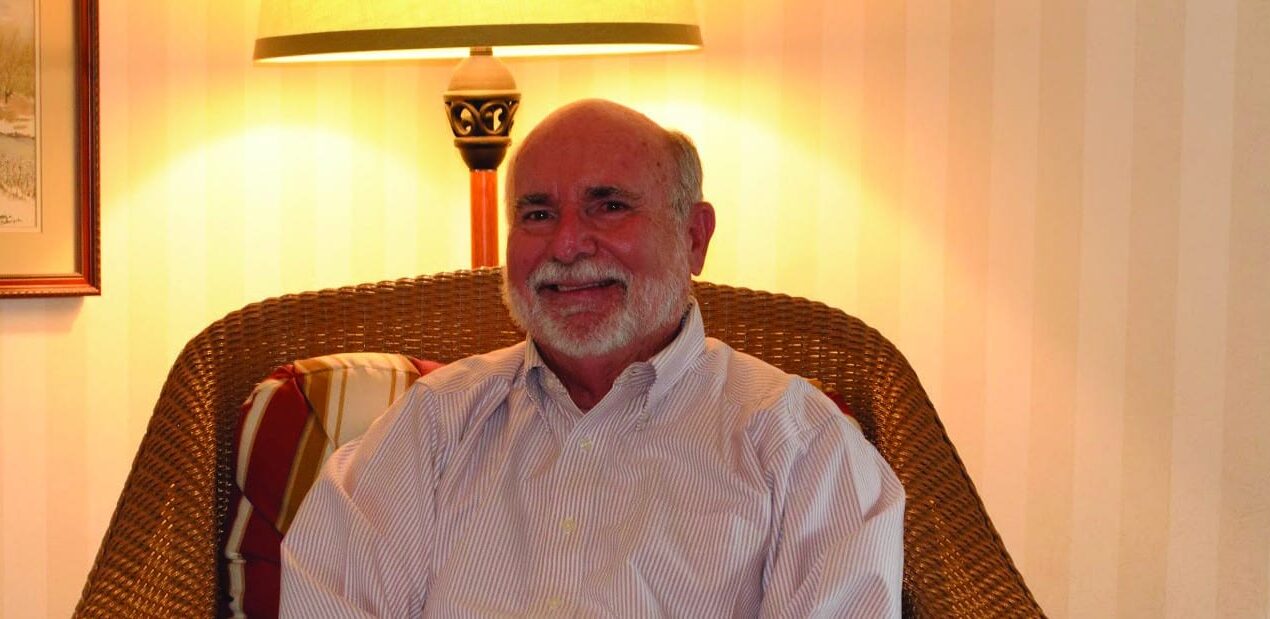By Parker Sumwalt
Special to the Denisonian
In order to see her son on television, Dr. Ronald Winters’ mother had to go down to the local furniture store to ask if she and her family could turn the channel to the one she wanted. “Imagine a cluster of eight or nine townsmen watching this television program,” he described. There were only three channels then. The television was still new, and the camera did not bother Winters because he didn’t know what the camera looked like.
That year in high school, a teacher asked him to participate in a contest the local college held. The rules required two students to participate and Dr. Winters agreed only in order to help his friend who wanted to go to college. First place was a full-ride. For the first round, he took a test amongst many other people. During the second round, less people came back. For the final round, he and four other students were asked to appear on T.V. They would be quizzed by the local professors and whoever did the best would win. Winters says, halfway through the show, “A fellow crawled right up beside me and touched me. He said, ‘Quit Answering. Other people need to answer. We have to have second and third place.’”
As a kid, he wondered what kept the atmosphere around the earth. “I decided that there had to be a containing surface that kept the air, but then I had a problem ‘cause Buck Rogers could fly out into space.” Buck Rogers was a sci-fi hero who fought the evil tyrant Killer Kane. Eventually, he learned about gravity from the books his mom let him check out from the library. In college, after first studying chemical engineering, he chose physics because he thought, “I might as well study the science that had all the answers.”
He finished college in 1963 and many top universities offered him positions. “I had received a special offer offer from a new organization, the National Aeronautics and Space Administration.” They were training scientist astronauts. NASA paid the way for his education. “They paid [my wife] a stipend. When our daughter was born, they paid her a stipend.” After he finished his thesis, however, NASA told him that they didn’t need him as an astronaut, but that he could still work for them as an engineer to continue to work on radiation detectors for the moon. He declined NASA’s offer because he didn’t want to work as an engineer.
After that, he started interviewing with a number of colleges. One professor invited him to interview at Denison, and they made him an offer. When Dr. Winters declined, they made him a slightly larger offer. At the time, his wife made more than Denison’s offer, but he said, “We said we would do it for a year or two. That’ll pay a debt.” He arrived in 1966 and stayed for another 33 years.
In his scientific career, Dr. Winters became friends with a great deal of important physicists such as Nobel Laureate, William F. Fowler and the more widely known, Carl Sagan. Winters’ published papers vary widely from things such as a new way to express the value 1/x and the age of the universe. He said, “One of my papers was cited five times last month. . . that’s the hope of every artist. You produce a piece of work – writing, painting, sculpture -and people appreciate it years, decades later. It doesn’t matter if what they’re doing is showing that I made some mistake. That’s how science gets done.”
Overall, he said he has had a blessed life. “I got to do physics all those years, and I got paid,” he said. “That’s like being paid to play.” When he answered questions, he would lean in, noticeably excited to talk about physics. Counting his blessings in life, he said it goes further than his overwhelming scientific career, he also has “three beautiful granddaughters and two handsome grandsons.”
Despite his success, he continually stressed that he was not too special. “I was typical, just typical of the quality of faculty at my time. . . in my cohort, I’m typical, not exceptional.”
Photo Courtesy of Emma Miller

